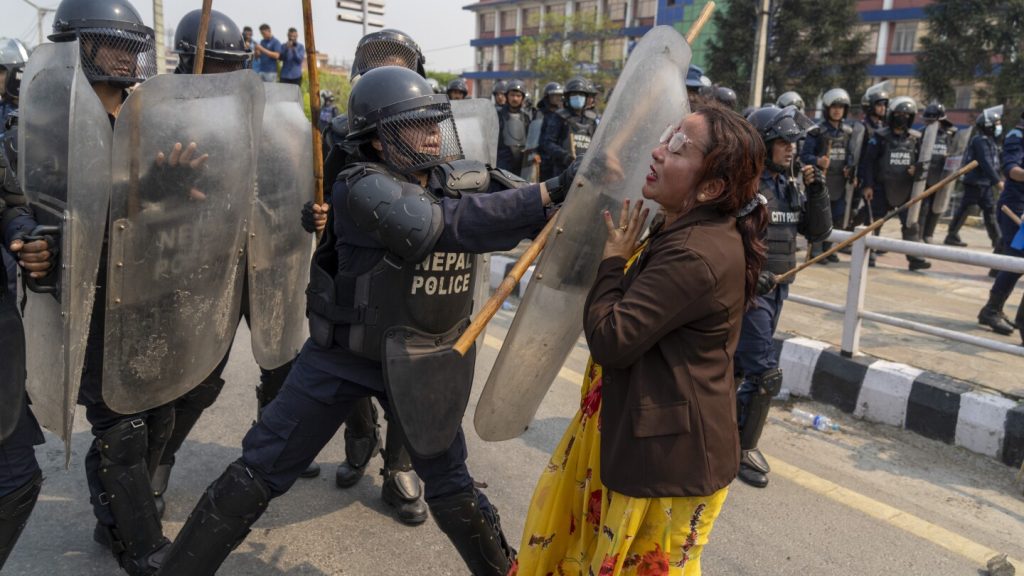The protest for the restoration of the monarchy in Nepal turned violent as supporters of former King Gyanendra clashed with riot police in Kathmandu. The demonstrators, led by the Rastriya Prajatantra Party, demanded the return of the monarchy which was abolished in 2008. They also called for Nepal to be converted back into a Hindu state, which goes against the secular status declared in the 2007 interim constitution. Despite the use of bamboo batons and water cannons by the police, no major injuries were reported during the clashes.
After weeks of street protests in 2006, Gyanendra was forced to relinquish his authoritarian rule and return power to Parliament. Two years later, Parliament voted to abolish the monarchy that had existed for centuries in Nepal. Since then, Gyanendra has been living as a private citizen without any official power or state protection. Although he still has some support among royalist groups, there is little chance of him returning to the throne. Supporters of the monarchy accuse the major political parties in Nepal of corruption and failed governance, and believe that the public is growing increasingly frustrated with the ongoing political instability in the country.
The Rastriya Prajatantra Party and its supporters believe that bringing back the monarchy would help address the issues of corruption and governance that have plagued Nepal since the abolition of the monarchy. They view Gyanendra as a figure who can bring stability and order to the country. However, critics argue that the monarchy was abolished for a reason and that returning to a system of absolute monarchy would be a regressive step for Nepal’s democratic progress. The country has experienced 13 different governments since the monarchy was abolished, highlighting the ongoing political challenges faced by the nation.
The clash between the protesters demanding the restoration of the monarchy and the riot police reflects the deep divisions within Nepali society regarding the role of the monarchy in governance. While some see the monarchy as a symbol of stability and tradition, others view it as a relic of the past that is incompatible with Nepal’s aspirations for democratic governance. The incident in Kathmandu highlights the ongoing political turmoil in the country and the challenges faced by Nepal in finding a sustainable and inclusive system of governance that addresses the needs and aspirations of all its citizens.
As Nepal continues to grapple with political instability and tensions surrounding the role of the monarchy, it remains to be seen how the government will respond to the demands of the protesters and address the underlying issues of corruption and governance. The clashes in Kathmandu serve as a reminder of the complexities and divisions within Nepali society and the challenges faced in trying to build a resilient and inclusive democratic system that serves the interests of all its citizens. The future of Nepal’s political landscape remains uncertain as the debate over the monarchy and governance continues to unfold.


